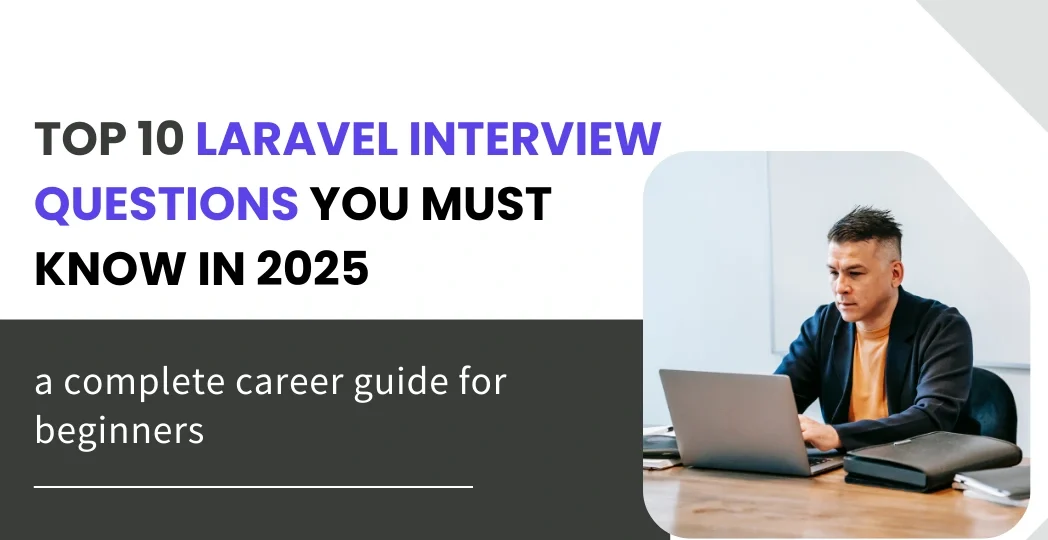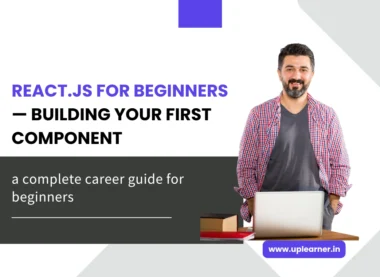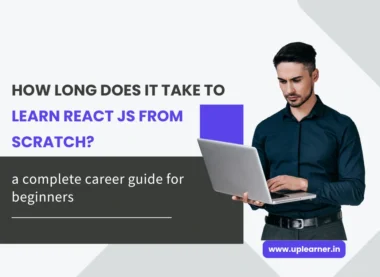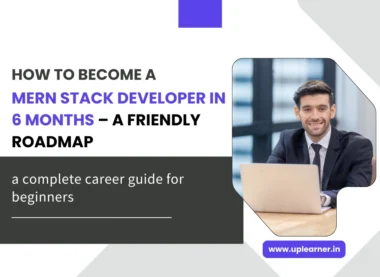Table of Contents
If you are getting ready for a web developer job, this article will help. I wrote it in simple English so it is easy to read. I explain the most common Laravel Interview Questions clearly and give small examples. Read this fully and you should have no doubts about the basics. If you want hands-on practice, try a Laravel Web Development Course to build real projects and feel more confident.
Why these Laravel Interview Questions matter
Interviewers want to know you can build real things, not just repeat definitions. Knowing common Laravel Interview Questions and answering with short examples shows you understand how Laravel works in real apps. Also, Laravel 12 is the stable version in 2025, so it helps to know the current release and a few updates.
Top 10 Laravel Interview Questions — explained simply
Below are ten questions you will often face. Each question includes a simple, clear answer and a short example you can use in an interview.
1) What is Laravel and why use it?
Say: Laravel is a PHP framework for building web apps. It follows MVC (Model-View-Controller) and gives tools for routing, database access (Eloquent), authentication, and more. Example: use Laravel to make a blog where controllers fetch posts and views show them. This shows you know both concept and use. Laravel Interview Questions often start with this one.
2) What is MVC in Laravel?
Explain: Models hold data, Views show data, Controllers connect both. Example: PostController uses the Post model and returns posts.index view. This simple pattern keeps code clean and testable.
3) What is Eloquent and how do relationships work?
Eloquent is Laravel’s ORM. You use methods like hasOne, hasMany, and belongsTo to link models. Example: User hasMany Post; Post belongsTo User. Be ready to explain one-to-one and one-to-many with short code.
4) How do migrations and seeders help during development?
Migrations version your database schema and let teams share the same structure. Seeders fill the database with test data. Workflow: create migration → php artisan migrate; create seeder → php artisan db:seed. This is a common Laravel Interview Questions topic because teams need safe database changes.
5) What is middleware and when to use it?
Middleware runs before/after a request. Use it for auth, logging, or checking user roles. Example: AdminMiddleware blocks non-admins from admin routes. Short examples make your answer stronger.
6) Explain dependency injection and the service container.
Laravel’s service container resolves class dependencies. If a controller needs a service, Laravel injects it automatically. This helps testing and swapping implementations without changing code.
7) What are Service Providers and Facades?
Service Providers register services in the container and bootstrap app features. Facades offer a simple static-like interface (example: Cache::get()). Explain when you’d write a provider (to bind services) and when you’d use a facade (simple calls).
8) How does Laravel handle authentication and APIs?
Laravel has built-in auth scaffolding and uses Sanctum for lightweight token or SPA authentication. For APIs, use API resources to format JSON and protect routes with middleware. Knowing Sanctum and its use for tokens is very helpful for Laravel Interview Questions about security.
9) How do you test a Laravel app?
Laravel uses PHPUnit and provides helpers like $this->get() and $this->post() for feature tests. Write unit tests for small logic and feature tests for user flows. Explain why tests keep apps stable and how you run them in your workflow.
10) How do you improve performance (caching, eager loading, queues)?
Talk about Cache facade for simple caching, eager loading (with()) to avoid N+1 queries, and queues for background jobs like emails. These answers show you think about real app performance and user experience.
How to prepare practically (short plan)
- Learn the answers above and explain each with one short example.
- Build two small projects — a blog and a simple API — during a Laravel Web Development Course or on your own. Showing projects in an interview helps a lot.
- Read the official docs for the Laravel version the company uses (2025 commonly uses Laravel 12).
- Practice answering Laravel Interview Questions aloud for one minute each. Clear speech and short examples win interviews.
- Prepare to write a small piece of code live: make a route, controller method, or simple test.
Final tips — answer like a person
When you answer Laravel Interview Questions, be honest. If you have not used a feature much, say so and add how you would learn it (read docs, quick example, Laracasts). This shows honesty and eagerness to learn — both valued by interviewers.
If you want, I can make a one-page cheat sheet of these Laravel Interview Questions or create mock interview rounds with answers you can practice. Which would you prefer: a cheat sheet or practice questions?







